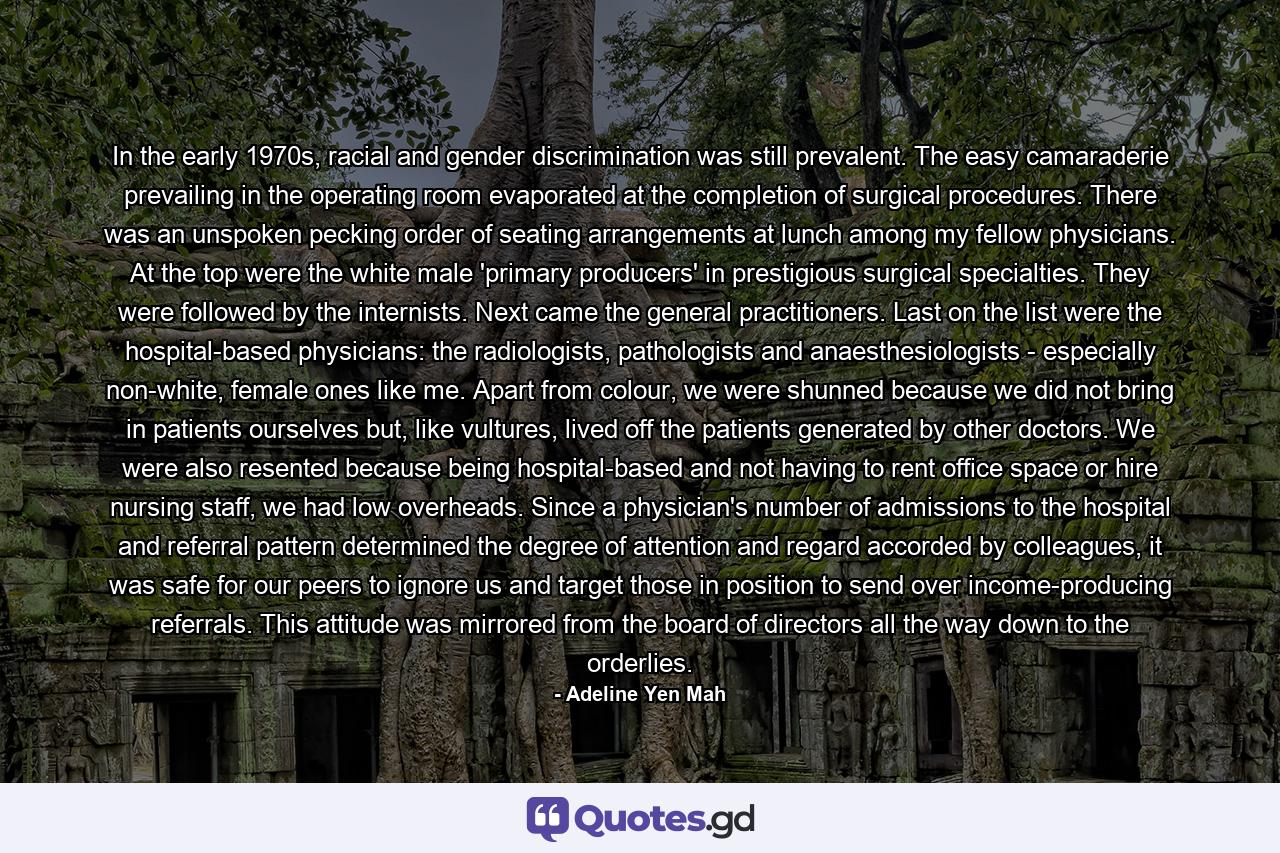In the early 1970s, racial and gender discrimination was still prevalent. The easy camaraderie prevailing in the operating room evaporated at the completion of surgical procedures. There was an unspoken pecking order of seating arrangements at lunch among my fellow physicians. At the top were the white male ‘primary producers’ in prestigious surgical specialties. They were followed by the internists. Next came the general practitioners. Last on the list were the hospital-based physicians: the radiologists, pathologists and anaesthesiologists – especially non-white, female ones like me. Apart from colour, we were shunned because we did not bring in patients ourselves but, like vultures, lived off the patients generated by other doctors. We were also resented because being hospital-based and not having to rent office space or hire nursing staff, we had low overheads. Since a physician’s number of admissions to the hospital and referral pattern determined the degree of attention and regard accorded by colleagues, it was safe for our peers to ignore us and target those in position to send over income-producing referrals. This attitude was mirrored from the board of directors all the way down to the orderlies.
